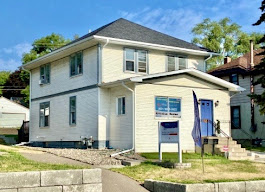By Mary Dodge Allen
How did this farm girl from the Missouri Ozarks become one of the most notorious criminals in America?
Arizona Donnie Clark was born in Ash Grove, Missouri, on October 8, 1873, the daughter of Scottish-Irish immigrants, John and Emaline Clark. Her parents and three siblings initially called her “Arrie.” But she grew to hate that name and later insisted on being called Kate.
Kate adored her father. But he died when she was only seven-years-old, and she was heartbroken. Her mother remarried a stern lawman, Reuben Reynolds. He came into the marriage with two children of his own, and he treated Kate and her siblings badly. She rebelled against her cruel stepfather by idolizing famous outlaws such as Jesse James and the Dalton Gang. Kate considered Jesse James a true underdog hero. When he was killed in 1882, she lost her favorite idol.
In 1927, Herman shot and killed a deputy during a robbery in Wichita, Kansas. He evaded the law for a few weeks. But then, just before he was captured, he killed himself using his own gun.
By 1928, the remaining three brothers, Lloyd, Arthur, and Fred Barker were all incarcerated in separate prisons in Oklahoma and Kansas. George Barker had been badly shaken by his son Herman’s suicide. He was also disgusted by his family’s criminal activities and Ma Barker’s unfaithfulness to him, so he left her and moved to Joplin, Missouri to open a gas station. George never came back.
In 1933, the gang began kidnapping rich men. They received a $100,000 ransom for William Hamm, Jr. (president of Hamm’s Brewing Co.); and a $200,000 ransom for kidnapping Edward Bremer (president of Commercial State Bank). The FBI identified the gang’s participation in these kidnappings through latent fingerprints. They began a manhunt for “Doc” and Fred Barker - the “Bloody Barkers” – and Alvin “Creepy” Karpis. For several months, the gang moved to different hideouts in the Chicago area, while they laundered the ransom money.
In early January 1935, Arthur “Doc” Barker was arrested in Chicago by FBI agents. They found a map of Florida in his possession, along with a letter from Ma Barker that mentioned a huge man-eating alligator named “Old Joe” living in a nearby lake. The FBI used this information to determine that the Barker-Karpis Gang were living in a rental home on Lake Weir – which was famous for its alligator named “Old Joe.”
The following year, Alvin Karpis was arrested. Both he and Arthur “Doc” Barker were sentenced to life in prison and sent to Alcatraz. In 1939, Arthur “Doc” Barker was killed by an Alcatraz guard as he tried to escape.
Meanwhile, Lloyd Barker had remained in prison during his family’s crime sprees. He was finally paroled in 1938. He moved to Joplin, Missouri and lived with his father, until George Barker’s death in 1941. (George was the only member of the Barker family to die of natural causes).
Alvin Karpis was paroled in 1969 and then deported to Canada. In 1971 he wrote a book of memoirs, published in the U.S. as: The Alvin Karpis Story. He moved to Spain in 1973, and he died in 1979 of an overdose of sleeping pills.
Harvey Bailey, another gangster who knew Ma Barker, was quoted as saying, “She couldn’t plan breakfast.”
At an early age, Ma Barker adopted the misguided attitude of admiring outlaws and criminals. She passed this attitude along to her sons, with tragic results. They not only wasted their lives committing violent crimes, they also killed many innocent people.














Wow! Very interesting, but very sad that their life was all about "bad" things. What a waste!
ReplyDeleteYes, I agree. Their life of crime was such a waste.
DeleteThank you for posting today. I wonder what her life might have been like if her dad had lived, or whether it would have still turned into the dark path.
ReplyDelete